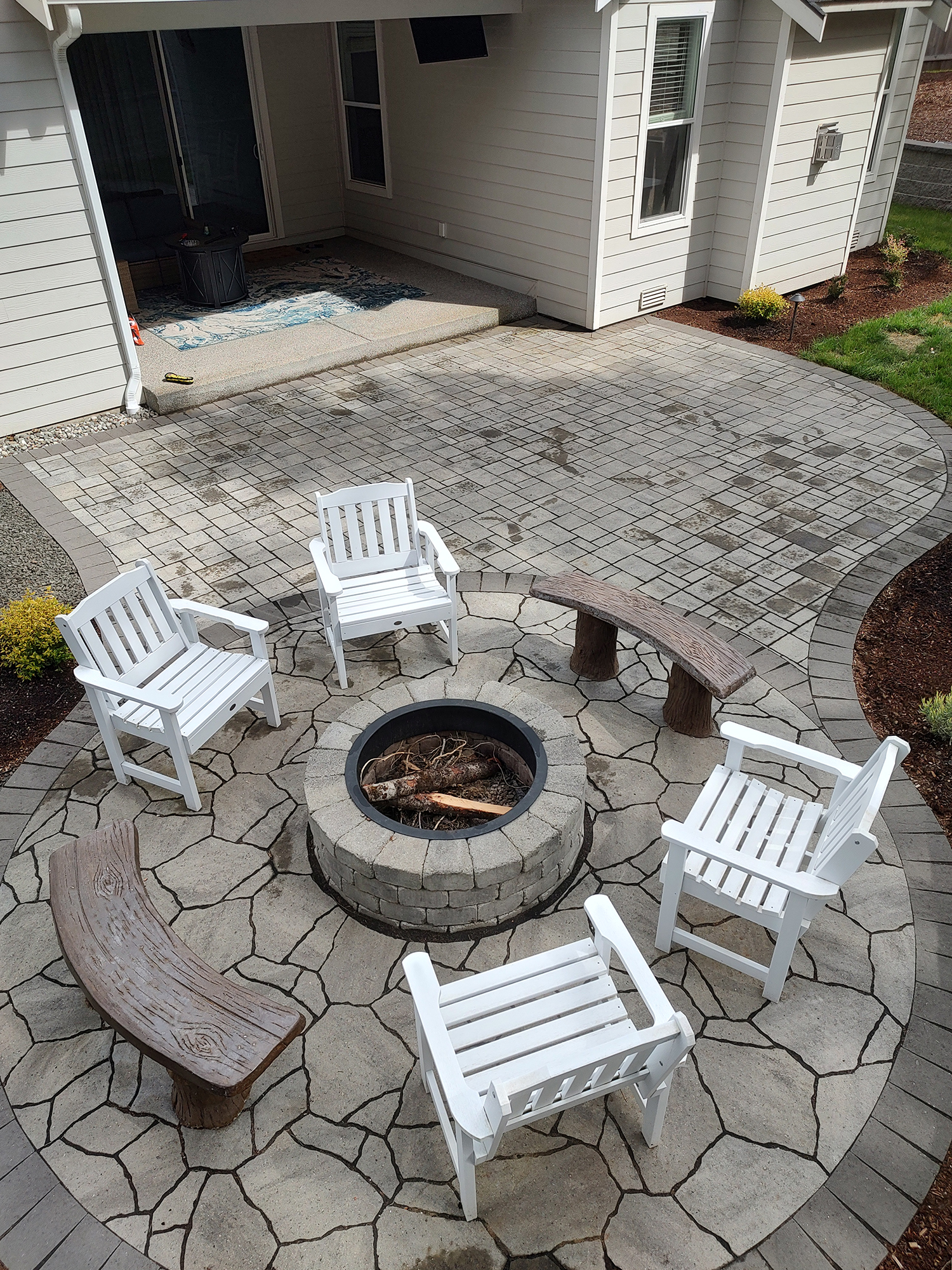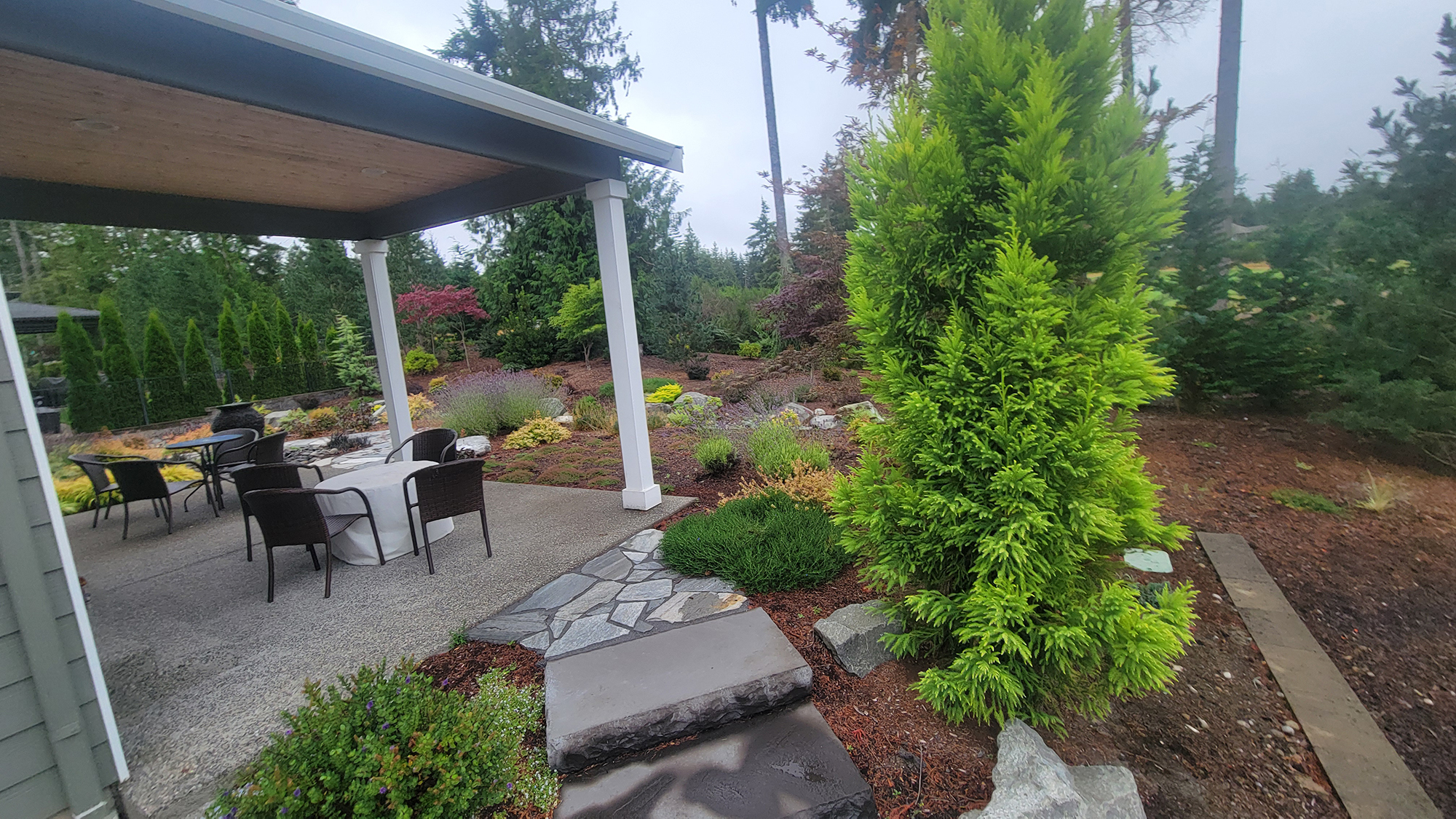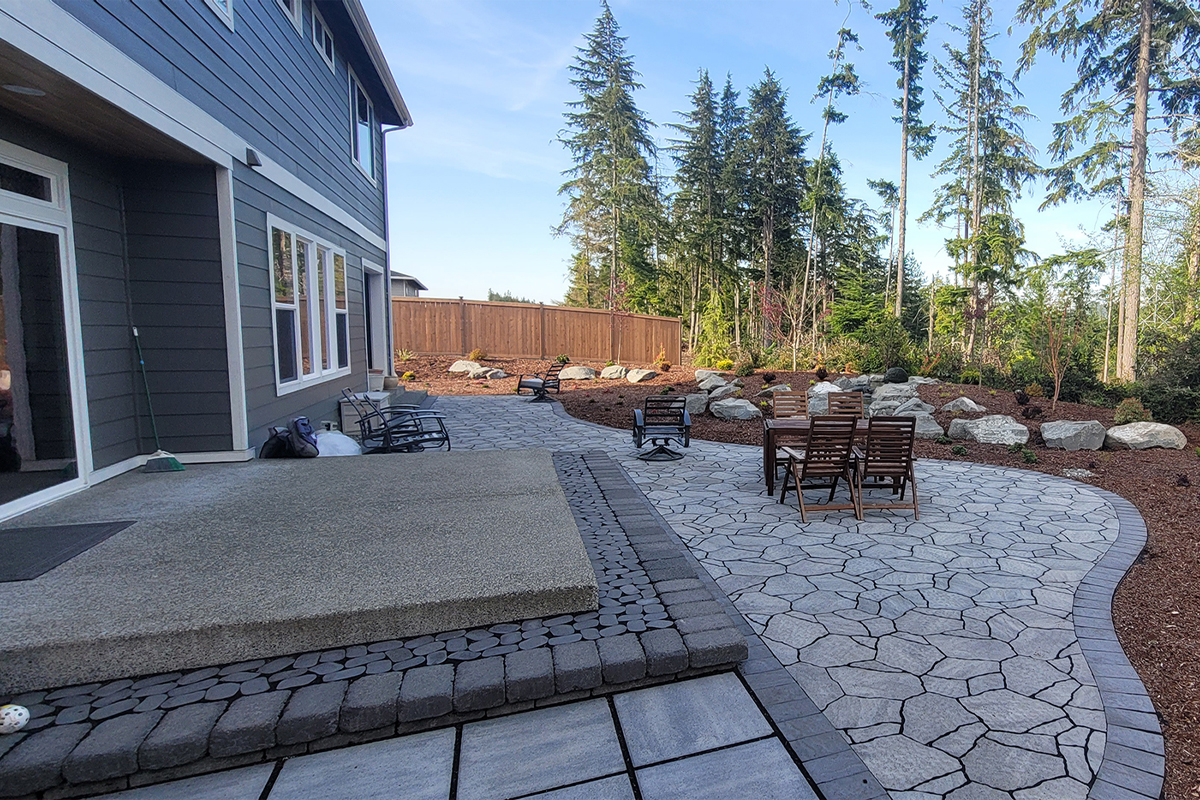You’ve been dreaming of transforming your backyard into the perfect outdoor retreat—a place where you can relax, entertain guests, or just enjoy a quiet evening with family. You’ve decided a patio is the perfect solution, but now you’re faced with a big decision: pavers or concrete? Both seem like great options, but which one is truly right for your backyard?
We get it. At Brookside Landscape and Design, we’ve seen homeowners in Kitsap Peninsula wrestle with this exact choice many times. It’s not just about picking something that looks good; you want something that’s going to last, something that fits your budget, and something you won’t regret a year down the line. The wrong choice can lead to frustration, extra maintenance, and even a costly redo. And no one wants that.
Let’s break down the differences so you can make the best decision for your backyard.
 Why You’re Torn Between Paver Patios and Concrete
Why You’re Torn Between Paver Patios and Concrete
Here’s the thing: paver and concrete patios each have their own pros and cons, which is probably why you’re feeling stuck. On one hand, you might love the sleek, clean look of concrete, and on the other, pavers offer that customizable, textured aesthetic that’s hard to ignore.
You want something that matches your home’s style and adds value to your property. But you’re also thinking about the long term—how well will this hold up? Will you be battling cracks, weeds, or fading? Are you going to have to pour money into repairs a few years down the line? These are questions every smart homeowner asks, and we’re here to help you answer them.
The Basics: What’s the Difference Between Pavers and Concrete?
Before we dive into the nitty-gritty, let’s make sure we’re all on the same page. A concrete patio is typically one large, solid slab. It’s poured into place and can be finished in different ways—stamped, smooth, or textured. It’s a single surface, so there are no joints or seams unless they’re intentionally added.
A paver patio, on the other hand, is made up of individual bricks or stones that are laid out in a pattern. Pavers can be made from concrete, brick, or natural stone, giving you a ton of flexibility in terms of style and appearance.
So, how do you decide which one is better for your backyard? Let’s look at the key factors that matter most to homeowners like you.
Durability: What Holds Up Best Over Time?
Durability is often the top concern for homeowners, and for good reason. The last thing you want is a patio that looks great the first year but starts crumbling or cracking after the first heavy rain or cold winter.
Concrete: While concrete can be durable, especially if it’s properly installed and sealed, it’s prone to cracking. Over time, weather conditions—especially in areas like the Kitsap Peninsula, where we get plenty of rain and occasional freezing—can cause concrete to expand and contract. This leads to cracks, which can be an eyesore and costly to fix. Even if you add expansion joints (the intentional seams that help prevent cracking), it’s hard to fully avoid this issue. And once a crack starts, it’s hard to stop.
Pavers: Paver patios are generally more resistant to weather-related damage. Because pavers are individual pieces, they’re flexible—literally. If the ground shifts or settles, the pavers move with it, reducing the chance of cracking. If one paver does get damaged, you can simply replace that one piece without tearing up the entire patio. This is a huge advantage in terms of maintenance and longevity.
Verdict: If you’re worried about cracking and long-term durability, pavers win this round.
 Maintenance: How Much Work Will It Be to Keep Up?
Maintenance: How Much Work Will It Be to Keep Up?
No one wants to spend their weekends scrubbing or fixing up a patio, so maintenance is a big factor to consider.
Concrete: Concrete patios are relatively low maintenance, but there are a few things to watch out for. First, concrete needs to be sealed to protect it from stains and weather damage. You’ll want to reseal it every couple of years to keep it looking its best. If it cracks or stains, those issues are harder to fix. Once cracks start forming, it’s tough to repair them without it being noticeable.
Pavers: Paver patios require a bit more routine maintenance because weeds can grow between the joints, and the sand used to keep the pavers in place can wash out over time. However, this is fairly easy to manage with a good weed killer and occasional replenishing of the joint sand. Because pavers are made from individual pieces, if a paver gets damaged or stained, you can swap it out without too much hassle. An upgraded joint sand will mitigate weeds and sealing patios further helps with weeds ands stains.
Verdict: Concrete requires less day-to-day maintenance, but if you’re looking for easier long-term fixes, pavers are a safer bet.
Aesthetics: Which One Looks Better in Your Yard?
Looks aren’t everything, but let’s be honest—they matter. You want your patio to complement your home and reflect your personal style.
Concrete: One of the reasons people love concrete is because it offers a smooth, clean, modern look. You can add decorative finishes like stamping or staining to mimic the look of stone or tile, but the variety is somewhat limited compared to pavers. Over time, though, concrete can fade or develop surface imperfections.
Pavers: Pavers offer almost endless design possibilities. With different shapes, sizes, and colors, you can create intricate patterns or a more rustic, natural look. Pavers also retain their color and texture better over time, and since they’re made from different materials, you can customize the look to match your home perfectly.
Verdict: If customization and aesthetic variety are important to you, pavers give you more flexibility and a unique look.
Cost: What’s Going to Fit Your Budget?
We know cost is one of the biggest factors for homeowners, so let’s talk dollars.
Concrete: Concrete is typically the more budget-friendly option upfront. The cost of materials and installation tends to be lower, especially for larger areas. However, as we mentioned earlier, repairs can get pricey if you run into issues down the line.
Pavers: Pavers generally come with a higher initial cost due to the labor-intensive installation process and the cost of the materials. But the long-term savings can balance this out, especially if you avoid costly repairs and replacements.
Verdict: Concrete is more affordable in the short term, but if you’re thinking long term, pavers could offer more value for your money.
Climate: Does the Kitsap Peninsula’s Weather Matter?
As Kitsap Peninsula residents, we know how much our rainy and occasionally freezing winters can impact outdoor surfaces.
Concrete: Concrete can be a bit of a gamble in our climate. With so much rain, the ground shifts frequently, and water can seep into any tiny cracks. If that water freezes, it expands and causes cracks to worsen. Plus, our damp conditions can lead to mildew or algae buildup, making the surface slippery.
Pavers: Pavers, being individual pieces, handle the ground shifting better. The space between the pavers allows for water drainage, which means they hold up better in wet climates like ours. And if you do run into problems, fixing them is a lot easier.
Verdict: For the Kitsap Peninsula’s climate, pavers are generally the better option.
Conclusion: Which One Is Right for You?
So, where does this leave you? If you’re looking for a budget-friendly, sleek patio that’s low maintenance in the short term, concrete might be the way to go. But if you want something that offers long-term durability, a customizable look, and better resistance to our rainy climate, pavers are probably your best bet.
At Brookside Landscape and Design, we’ve helped countless Kitsap Peninsula homeowners create beautiful, long-lasting outdoor spaces. We know choosing the right patio can feel overwhelming, but you don’t have to go it alone. Reach out to us, and we’ll help you make the best choice for your yard and your budget.
Your backyard should be a place you love, and we’re here to help make that happen.

